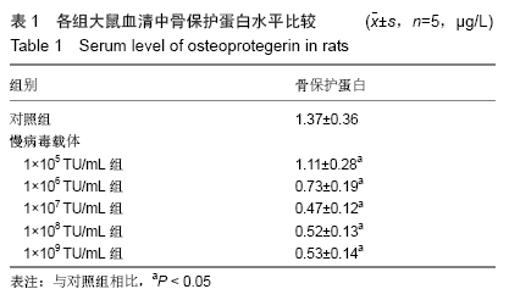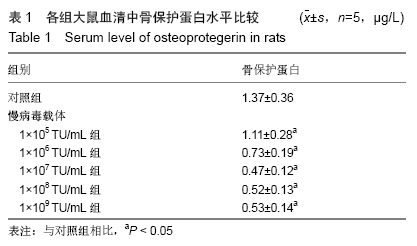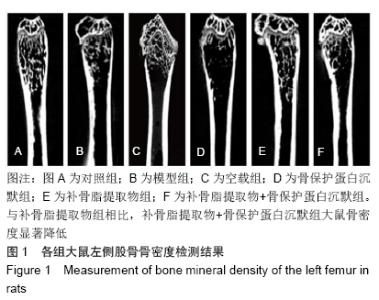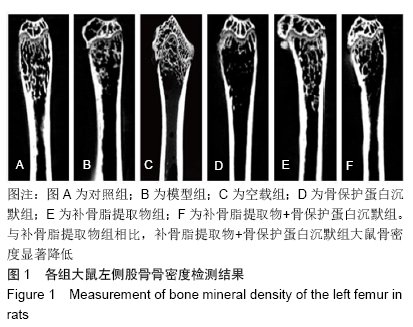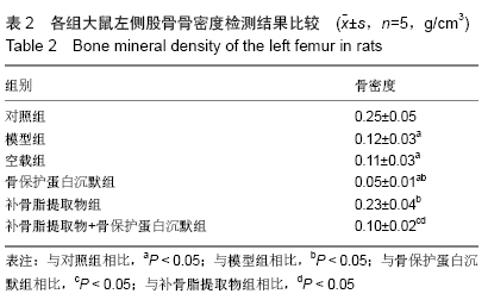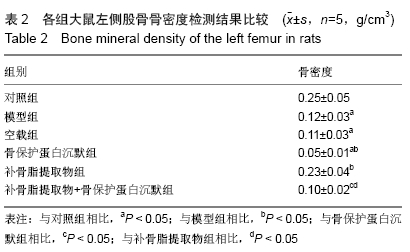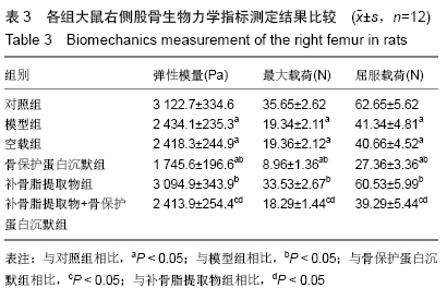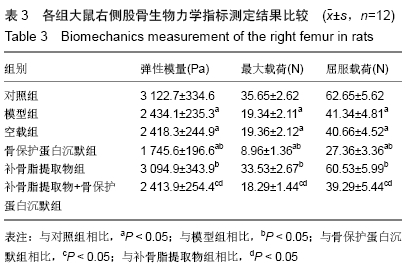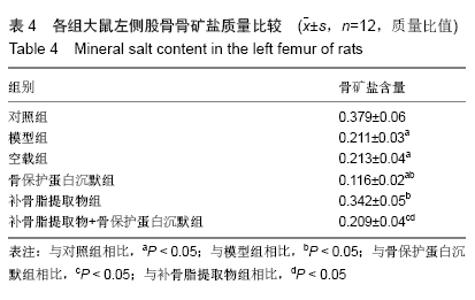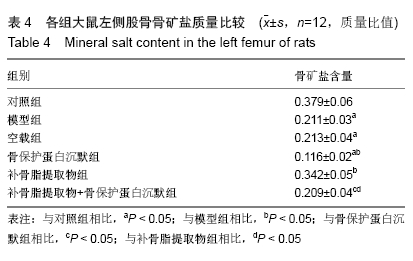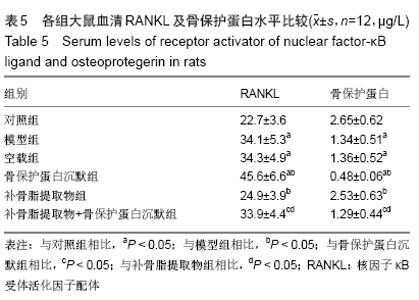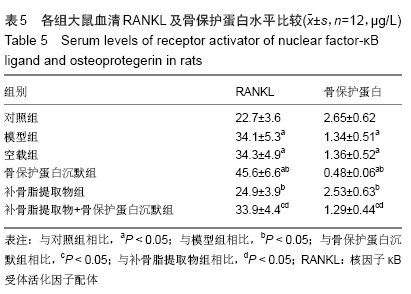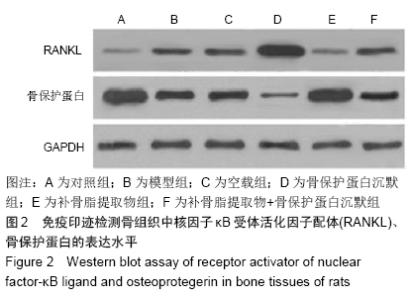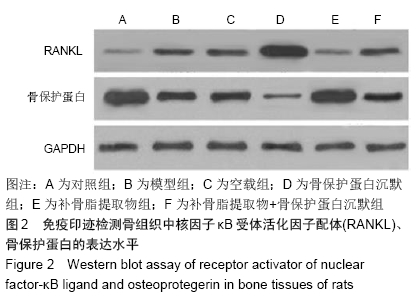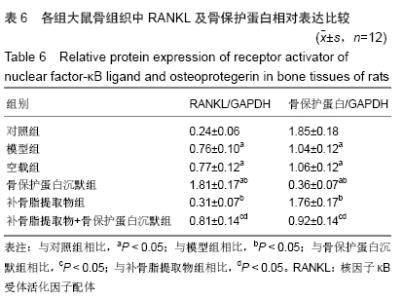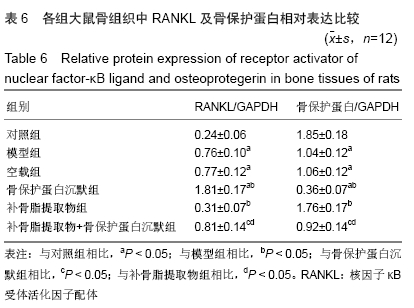[1] WANG YK, ZHANG YM, QIN SQ, et al. Effects of alendronate for treatment of glucocorticoid-induced osteoporosis: A meta-analysis of randomized controlled trials.Medicine.2018;97(42): e12691-e12710.
[2] ZHU H, WANG M, ZHAO C, et al.GAG and collagen II attenuate glucocorticoid-induced osteoporosis by regulating NF-κB and MAPK signaling.Am J Transl Res. 2018;10(6):1762-1772.
[3] ZHANG H, SHI X, WANG L, et al. Intramembranous ossification and endochondral ossification are impaired differently between glucocorticoid-induced osteoporosis and estrogen deficiency-induced osteoporosis. Sci Rep.2018;8(1):3867-3880.
[4] 李凯明,郝延科.补骨脂抗骨质疏松症的研究进展[J].中医药临床杂志, 2016,28(6):886-888.
[5] 邵航,张俐,补骨脂抗骨质疏松作用的研究进展[J].中国中医骨伤科杂志, 2015,23(3):69-71.
[6] LI JP, XIE BP, ZHANG WJ,et al.Psoralen inhibits RAW264. 7 differentiation into osteoclasts and bone resorption by regulating CD4+ T cell differentiation.Zhongguo Zhong Yao Za Zhi. 2018; 43(6):1228-1234
[7] 李子怡,李玉坤.OPG/RANK/RANKL信号通路在骨质疏松症中的研究进展和应用[J].中华老年骨科与康复电子杂志,2017,3(2): 124-128.
[8] 向益,郑烽,王显.基于OPG/RANKL/RANK通路探讨单味中药治疗骨质疏松的研究进展[J].中国中医骨伤科杂志, 2019,27(2):86-88.
[9] XIAO YP,ZENG J,JIAO LN,et al.Review for treatment effect and signaling pathway regulation of kidney-tonifying traditional Chinese medicine on osteoporosis.Zhongguo Zhong Yao Za Zhi. 2018;43(1): 21-30.
[10] 邢亚群,王迪生,王群,等.精骨补肾颗粒对地塞米松诱导骨质疏松症大鼠的保护作用[J].中成药,2016, 38(6):1221-1224.
[11] 阿布都吉力力•阿布都艾尼,祖力喀尔•买买提,买合素提•卡德尔,等.补骨脂水提取物小鼠灌胃急性毒性及亚急性毒性试验研究[J].中国药理学通报,2017,33(1):147-148.
[12] LANE NE.Glucocorticoid-Induced Osteoporosis:New Insights into the Pathophysiology and Treatments.Curr Osteoporos Rep. 2019; 17(1): 1-7.
[13] CHERIAN KE, KAPOOR N, PAUL TV. Glucocorticoid-induced Osteoporosis.Indian J Endocrinol Metab. 2017;21(5):652-654.
[14] LU SY,WANG CY,JIN Y,et al.The osteogenesis-promoting effects of alpha-lipoic acid against glucocorticoid-induced osteoporosis through the NOX4, NF-kappaB, JNK and PI3K/AKT pathways.Sci Rep. 2017; 7(1):3331.
[15] 杨胜杰,钟少达,杨进平,等.补骨脂酚的提取纯化工艺优选及其对骨质疏松症的治疗作用分析[J].中国实验方剂学杂志,2017,23(22): 43-47.
[16] 章文娟,谢保平,李伟娟,等.补骨脂素抑制破骨细胞形成及其机制的实验研究[J].第三军医大学学报, 2017, 39(7): 641-645.
[17] 孟东方,李慧英,王韬,等.补骨脂干预兔激素性股骨头坏死空骨陷窝的影响[J].中华中医药杂志, 2015(4):1313-1316.
[18] 杨军,莫新民.壮骨止痛方对骨质疏松大鼠Wnt/β-catenin、RANKL/ RANK/OPG信号通路的影响[J].北京中医药, 2017, 36(7):611-613.
[19] 车路阳,刘长振,黄鹏.RANKL/RANK/OPG通路及其相美药物狄诺塞麦治疗骨质疏松的研究进震[J].世界最新医学信息文摘(电子版), 2017,17(34): 43-46.
[20] 补骨脂水煎液和醇提物对斑马鱼骨骼发育的影响及其毒性作用[J].中国药理学与毒理学杂志,2017, 31(6):661-669. |
